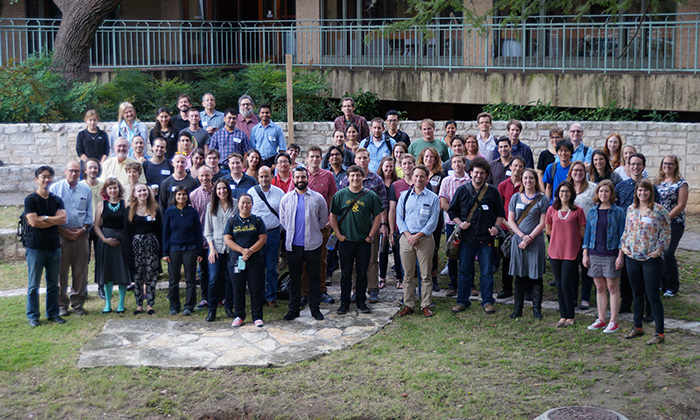
Nearly a decade ago, when the U.S. was going through one of the worst recessions in decades, the Center for Learning and Memory (CLM) at the University of Texas at Austin was one of the few places hiring new neuroscience faculty. Most other universities canceled their recruitment efforts.
"It was like getting the first-round draft picks in the NFL several years in a row," says Michael Mauk, Department of Neuroscience chair. "Each year, we got the best young scientists coming out in the job market. We're populated with wildly talented young faculty."
As a result, a few years later, when the College of Natural Sciences commissioned an external review of the CLM from a team of prominent members of the National Academies, the results were impressive.
"We had only been in existence for about eight years, and yet they viewed us as one of the top centers in the country already," recalls CLM Director Daniel Johnston.
As the University launches a new brain health initiative that will match research excellence with clinical operations at the Dell Medical School, the story of cutting-edge scientific investigations from the Department of Neuroscience—and the Center for Learning and Memory specifically—is more timely than ever. To glimpse the future of UT Austin research into persistent disorders and mysteries of the brain, it’s worth revisiting how some of the nation’s leading learning and memory scientists wound up on the Forty Acres to begin with.
A Visionary Start
The center, founded in 2004, was the brainchild of Johnston, then a professor at the Baylor College of Medicine in Houston. The former College of Natural Sciences dean Mary Ann Rankin originally recruited Johnston to head the Institute for Neuroscience, the intellectual and administrative center for neuroscience research and graduate education across the university. He did so on the condition that an independent center be formed with a more specific focus—learning and memory. It took two years, but Rankin and the University’s provost Sheldon Eckland-Olson worked hard to make it a reality.
“If they had not had the vision and desire for a major growth of neuroscience, none of this would have happened and none of us would be here,” says Johnston.
One of the earliest recruits to the Center was, Richard Aldrich, whose expertise in the molecular mechanisms of ion channel function, had landed him faculty positions previously at Yale and Stanford. Adding to the research clout was Johnston himself, who studies how neurons work at the cellular and molecular level. His recent research has centered on how changes in ion channels—parts of neurons that allow them to send electrical signals back and forth—relate to epilepsy, depression and other disorders.
The Center for Learning and Memory was set up to focus on three specific areas: learning and memory; plasticity (how our brains change in response to the environment) and brain disorders. At the time of its founding, there were only a couple of other major research institutes in the U.S. focused specifically on those areas of neuroscience.
"The interest of our center is how do molecules, cells and circuits in the brain change as a function of learning and memory?" says Johnston. "There has to be some change in your nervous system. What is that change? Is it molecular? Is it electrical? Is it anatomical? Well, it's all of those, and that's what we're trying to understand at the fundamental level at our center."
On the Map
To build the new center, Johnston hired scientists studying the brain from many different perspectives—from how individual cells and molecules work, to how groups of neurons are wired together to form circuits, right on up to the ways we think and behave. This diversity of approaches has yielded many interdisciplinary collaborations that have pushed forward the science.
An article in the current issue of the college’s Texas Scientist magazine highlights this diversity of perspectives through five example CLM research projects.
The center has grown to 14 faculty, as well as a host of research scientists, postdoctoral researchers and graduate students, making it one of the largest concentrations of scientists studying learning and memory in the country.
Faculty in the CLM have won numerous honors and awards, including three fellows of the American Association for the Advancement of Science, two Sloan Foundation Research Fellows and a recipient of an NSF Faculty Early Career Development award. Aldrich is both a member of the prestigious National Academy of Sciences and a fellow of the American Academy of Arts and Sciences.
In the past fiscal year, CLM faculty had 39 active research grants representing a total value of over $29 million to the university. That includes $4 million in NIH BRAIN Initiative grants to develop techniques for imaging and manipulating the activity of neurons.
“We weren’t on the map five or ten years ago,” says Johnston, “and now we’re on the national and even international map.”